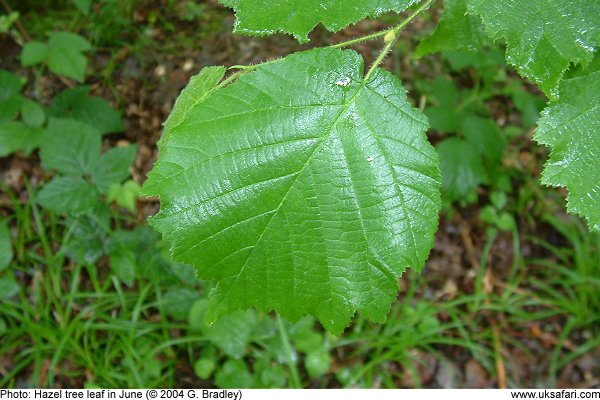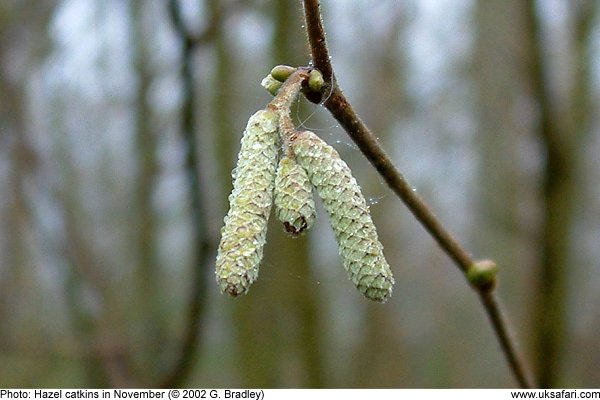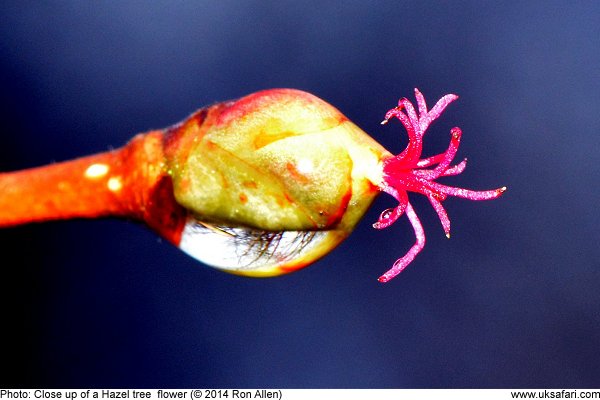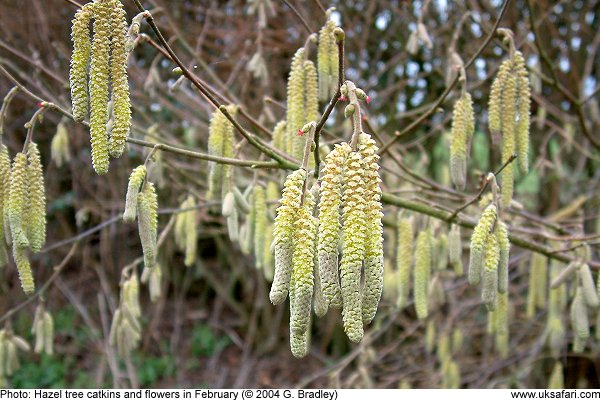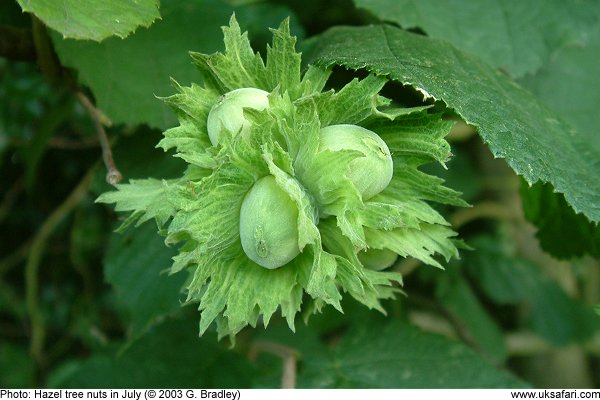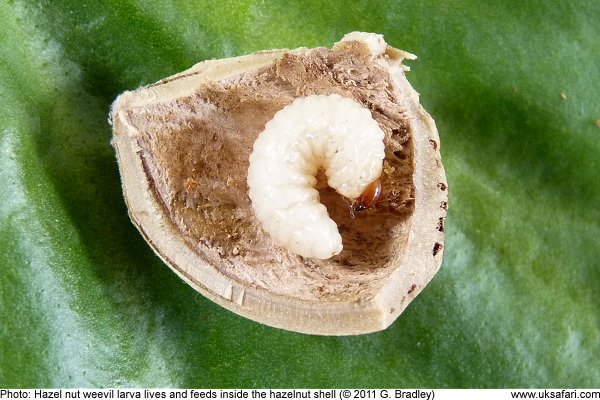 Quick Facts
Quick Facts
Scientific name: Corylus avellana
Size: Grows to a height of 6m
Distribution: Found throughout the U.K.
Flowering Months: The male flowers are long yellow catkins, known as 'lamb's tails'. They first appear around late October to early November, and are short and green. Between February and April they open up to release their pollen. The female flowers, which grow on the same tree, are small, red and bud-like in appearance. It is the female flowers which later develop into the hazel or cob nuts. The flowers appear before the leaves
Habitat: Woods, parks, hedgerows and gardens
Special features: The hazel tree can be seen almost anywhere in the U.K., frequently in the under wood, beneath the large oaks and beech trees. It's leaves are rounded, pointed at the end, hairy on both sides and have jagged toothed edges.
Where the wood is managed, the hazel tree is usually kept as a coppiced shrub. Coppicing is a system of cutting the stems of the tree back to ground level every few years. This provides a crop of supple timber, used for many woodland crafts, and it also encourages the tree to produce several new, straight stems.
The hazel nuts are also harvested, and are a popular addition to chocolate confectionary. The nuts also attract many species of wildlife including squirrels, wood mice, dormice and insects like the hazel nut weevil.
 Related Pages
Related Pages

 Popular Pages
Popular Pages
Amphibians, Bats, Badgers, Beetles, Birds, Birds of Prey, Bumble Bees, Butterflies, Caterpillars, Creepy-Crawlies, Deadly Spiders, Dolphins, Dragonflies, E-Postcards, False Widow Spiders, Free Newsletter, Frogs, Fungi, Garden Spiders, Glow-Worms, Grey Squirrels, Hedgehogs, House Spiders, Ladybirds, Mammals, Marine Mammals, Moths, Owls, Reptiles, Spiders, Toads, Trees, Wildlife Hospitals
Copyright © 2020 G. Bradley UK Safari. All rights reserved | About Us | Links | Contributors


 Hazel Trees
Hazel Trees